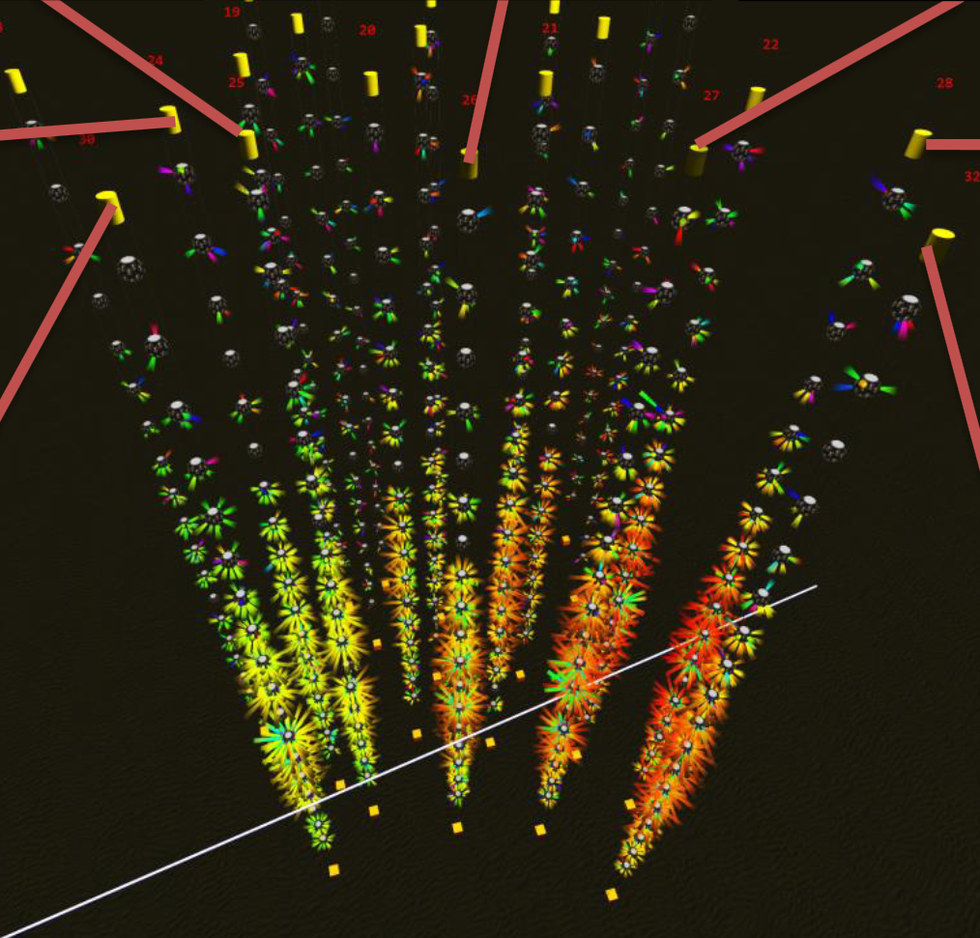- A new array of neutrino sensors, ARCA, lines the Mediterranean Sea floor near Sicily.
- A physicist took ARCA’s first big win to a warm audience at the Neutrino 2024 conference.
- The highly energetic neutrino may indicate a source from an explosion in space.
At a conference in June, physicist Joao AB Coelho of the French Astroparticle and Cosmology Laboratory presented a project that shares a fair amount of DNA’s intelligence Twister‘s Dorothy: a large array of artificial spherical heads that could help us detect plume-light neutrinos from under the ocean. These ‘eyebombs’ are wrapped in a sphere, and then those spheres are wrapped in another sphere. Could a massive installation on the seabed off the coast of Sicily help us determine more of the universe’s mysterious (but abundant) neutrinos?
Building facilities or infrastructure under the deep sea is a big challenge. At about 3,500 meters (about 11,500 feet) deep in the Mediterranean Sea, the ARCA part of the KM3NeT research platform experiences about 348 atmospheres of pressure. Compare that to the single pressure atmosphere we experience at sea level, and you can get an idea of the intensity of the conditions all the way down. However, deep underwater, sensors have a better chance of observing neutrinos because they are shielded from some of the surface electromagnetic noise.
These arrays of sensors—which are strung on vertical strings that are 700 meters (about 2,200 feet) long—detect and separate three distinct layers of particle noise. The first layer is the natural background “optical noise,” which Coelho explained is mostly from the decay of the radioactive isotope potassium 40. This noise is so persistent that it can help calibrate instruments and also detect emitted neutrinos. from supernovae (which have a different signature than others detected by this machine).
The second layer of noise is cosmic rays from outer space. They constantly hit the Earth’s atmosphere and become fireworks of particles when they collide with the nuclei of atoms found there. These resulting particles, Coelho explained, are muons that decay rapidly, creating optical noise that can also be used for calibration, as well as helping to solve some unresolved problems with the existence of muons.
Finally, the third layer is where we get the neutrinos coming from the Earth’s atmosphere. Some of the cosmic rays that hit our atmosphere create muons that, in turn, decay into muonic neutrinos. In a weird way, it’s like an avocado from space. When the ‘avocado’ (cosmic ray) hits a nucleus, it loses its ‘skin’, leaving a less stable ‘flesh’ (muon) underneath. Then that flesh is stripped of physics, leaving only the ‘seed’ (neutrino muon). What we want here is that neutrino.
Neutrinos are like that extremely so small that they can easily pass through almost anything, including water and the Earth itself. “The Earth is a great shield of cosmic rays, but neutrinos don’t care,” Coelho explained in a slide. So arrays of sensors in ARCA’s deep-sea setup can detect these smaller particles, as well as information that tells us what the neutrinos “taste like.”
At the conference, Coelho was worried about an upcoming news from ARCA and KM3NeT. Nature reports that ARCA has already detected the most energetic possible neutrino to date, and unlike the cold neutrinos created in our atmosphere, this one is probably from something “cataclysmic” in the deep cosmos. And that’s ARCA’s secret weapon: a fourth layer that ignores all the previous noise in order to amplify energetic neutrinos from further away.
At this energy level, Coelho explained, it’s almost always very dark. When many of ARCA’s sensors flashed with a sudden and very bright event, all the scientists took notice. The energetic signature of the neutrino appears to have given ARCA a proving ground to continue the search for neutrinos from the cosmos – as well as their explosive sources.

Caroline Delbert is a writer, avid reader, and contributing editor at Pop Mech. She is also an enthusiast for everything. Her favorite subjects include nuclear energy, cosmology, everyday mathematics, and the philosophy of it all.
